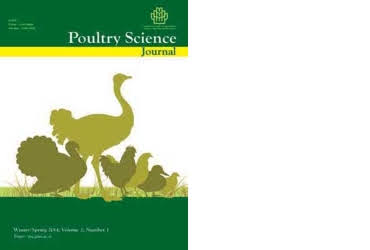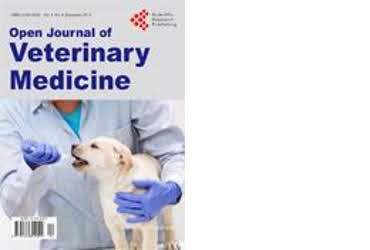Research > Microbe > Fungi > Candida
Common Names for Hypochlorous Acid Solutions
- Electrolytically Generated Hypochlorous Acid
- Neutral Electrolyzed Water (NEW)
- Electrolyzed Oxidizing Water (EOW)
- Electro-chemically Activated Water (ECA)
- Super-oxidized water (SOW)
Results: 3 published articles

Microbe(s): Fungi, Candida albicans
The fungicidal influencing factors of electrolyzed oxidizing water (EOW) on Candida albicans were investigated by suspension quantitative germicidal tests. Results showed that EOW possessed predominant fungicidal rate on C. albican, as high as consummately 100% after 0.5 min duration of 65.5 mg/L active available chlorine concentration (ACC). The fungicidal effect was promoted proportionally along with ACC but was inhibited by organic interferential bovine serum albumin (BSA). The fungicidal mechanism was also investigated at a biological molecular level by detecting series of biochemical indices. Fluorescent microscopy showed that almost all C. albicans cells were stained red in 1 min, suggesting that cell membrane was one of EOW s action targets. Transmission electron microscopy (TEM) showed that EOW destroyed the cellular protective barriers and imposed some damage upon the nucleus area, which verified EOW s effects on microbial ultra-structures. EOW improved membrane permeabilities with the result that the leakages of cellular inclusions (K+, proteins and DNA) and the conductivity increased rapidly. The dehydrogenase relative activities of C. albicans decreased by 44.0% after 10 min, indicating that EOW also had a destructive effect on cellular dehydrogenase.

Microbe(s): Fungi, Pseudomonas spp., Candida spp.
The effect of acidic, electrolyzed oxidizing (EO) water and chlorinated water on the spoilage microflora of processed broiler carcasses was examined. Carcasses were sprayed for 5 s at 80 psi with tap, chlorinated, or EO water in an inside-outside bird washer. Treated carcasses were then stored at 4 C for 0, 3, 7, or 14 d, and the microbial flora of the carcasses was sampled using the whole-carcass rinse procedure. Populations of psychrotrophic bacteria and yeasts in the carcass rinsates were enumerated. Results indicated that immediately after spraying the carcasses, significantly fewer psychrotrophic bacteria were recovered from carcasses sprayed with chlorinated or EO water than from carcasses sprayed with tap water. Furthermore, significantly fewer yeasts were recovered from carcasses sprayed with EO water than from carcasses sprayed with tap or chlorinated water. The population of psychrotrophic bacteria and yeasts increased on all carcasses during refrigerated storage. However, after 14 d of storage, significantly fewer psychrotrophic bacteria and yeasts were recovered from carcasses sprayed with EO water than from carcasses sprayed with tap or chlorinated water, and significantly fewer microorganisms were recovered from carcasses sprayed with chlorinated water than from carcasses sprayed with tap water. Pseudomonas spp. and Candida spp. were the primary microbial isolates recovered from the broiler carcasses. Findings from the present study indicate that EO water can effectively be used in inside-outside bird washers to decrease the population of spoilage bacteria and yeasts on processed broiler carcasses.

Microbe(s): Enterococcus faecium, Mycobacterium avium subspecies avium, Proteus mirabilis, Pseudomonas aeruginosa, Staphylococcus aureus, Candida albicans
Standards of the German Association of Veterinary Medicine (DVG) for the evaluation of chemical disinfectants were used to assess the anti-microbial efficacy of electrolysed oxidizing water (EOW). Enterococcus faecium, Mycobacterium avium subspecies avium, Proteus mirabilis, Pseudomonas aeruginosa, Staphylococcus aureus and Candida albicans were exposed to anode EOW (pH, 3.0 0.1; oxidation-reduction potential (ORP), +1100 50 mV; free chlorine, 400 20 mg/l Cl2) and combined EOW (7 : 3 anode : cathode, v/v; pH, 8.3 0.1; ORP, 930 950 mV; free chlorine, 271 20 mg/l Cl2). In water of standardized hardness (WSH), all bacterial strains were completely inactivated by a 30 min exposure to maximum 10.0% anode EOW ( 40.0 mg/l Cl2) or 50.0% combined EOW ( 135.5 mg/l Cl2). The sensitivity ranking order for anode EOW to the bacterial test strains was P. mirabilis > S. aureus > M. avium ssp. avium > E. faecium > P. aeruginosa. P. mirabilis and S. aureus decreased to undetectable levels after 5 min of exposure to 7.5% anode EOW ( 30.0 mg/l Cl2). Candida albicans was completely inactivated by a 5-min exposure to 5.0% anode EOW. Both, anode and combined EOW exhibited no anti-microbial activities in standardized nutrient broth or after addition of 20.0% bovine serum to the WSH. Further research is necessary to evaluate the efficacy of EOW as a disinfectant under operating conditions in animal production facilities.